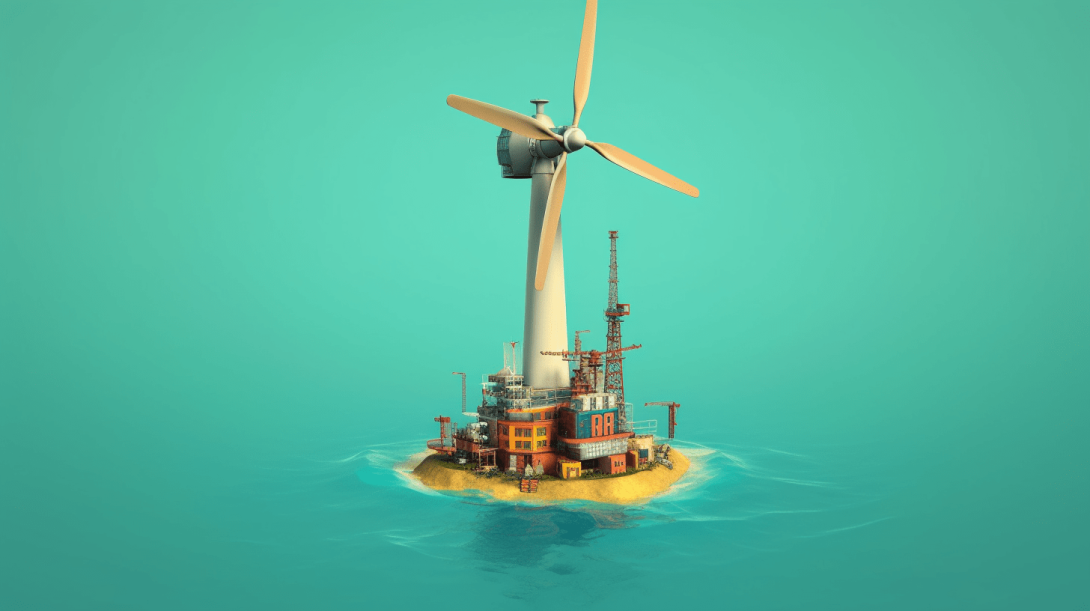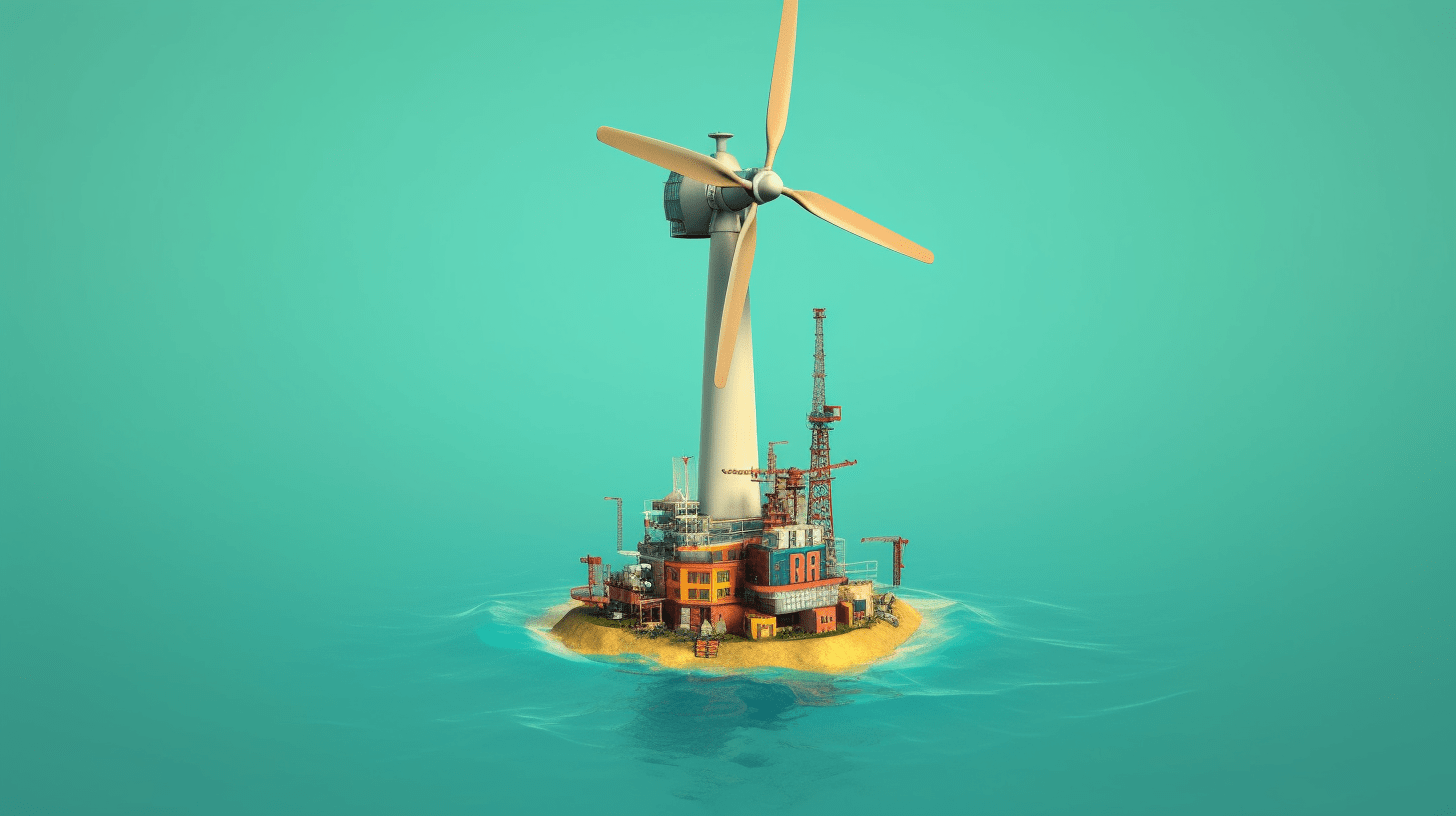

INTELLIGENT ENGINEERING
Blowing Away the Carbon:
The Role of Offshore Wind in Decarbonising Traditional Energy Sources
Why is offshore wind power technically and economically viable to decarbonise traditional oil and gas production? The first offshore wind farm in Denmark in 1991 marked the beginning of a transformation in the energy industry. From its initial niche status, the North Sea offshore wind industry has grown to become a mainstream energy source. The UK, in particular, has integrated fixed-base offshore wind power into its energy mix, supplying commercial-scale power to onshore users. However, the question arises as to why not simply transmit this power directly to onshore consumers.
There are several technical and economic reasons that offshore wind power is a viable option for decarbonising traditional oil and gas production. Firstly, new offshore wind license areas are often located in deeper waters and at greater distances from the coast. Once land is reached, these sites are still far from potential markets. These logistical factors drive up the cost of delivering power to onshore users. Consequently, supplying power to offshore oil and gas extraction and production sites presents an opportunity to distribute power more economically than if it were to be transferred to onshore markets.

The North Sea Transition Deal, supports the sector's pivot towards renewable energy resources, safeguarding a sustainable trajectory for proficient oil and gas personnel and the entire supply chain.
Moreover, providing electrical power directly to these offshore sites reduces the consumption of fossil fuels, as the offshore oil and gas industry typically uses power derived from its own production. Importantly, new license areas are often relatively near existing oil and gas production basins, making them suitable for either floating offshore wind or a combination of floating and fixed bases. This proximity could hasten the development of new and potentially expensive floating offshore wind technologies and engineering solutions.
Unveiled in March 2021, the North Sea Transition Deal endorses the shift of the UK's oil and gas industry towards renewable energy. It ensures a sustainable future for skilled workers and supply chains alike. However, traditional fuels still dominate the UK's energy mix, especially in transportation. Per Office for National Statistics data, of the 32.7 million licensed cars in 2020, 97% ran on either petrol (58%, 19.1 million) or diesel (38%, 12.5 million). This highlights the UK's continued heavy reliance on non-renewables, despite government deals targeting decarbonisation of the oil and gas sector. Significant work remains to transition the transport sector away from carbon-intensive petrol and diesel.

According to the UK 2021 census, only 98,730 households in England and Wales (less than 1% of the total)
reported their central heating was powered entirely by renewable energy.
The sizable use of fossil fuels across the UK economy is highlighted by these statistics. However, decreasing the carbon intensity of oil and gas output could lessen the environmental impact of this ongoing usage. Offshore wind power represents a key solution to mitigate continued fossil fuel reliance in the interim. While further electrification of transport and heating presents the long-term answer, offshore wind can provide cleaner energy during this transitional phase. This will be critical to decreasing the effects of persisting, albeit necessary, fossil fuel application until largescale electrification is achieved.
Peter Daniel
EPConsult Energies | INTELLIGENT ENGINEERING
More insights:

Hydrogen Challenges and Solutions
Hydrogen, with a history intertwined with the energy sector for over two centuries, is witnessing a remarkable resurgence, particularly as a renewable energy source in the UK's transition from fossil fuels. As the momentum around hydrogen energy grows, so does the question of its safety. While all fuels inherently pose some risks, hydrogen's unique properties, such as a wide range of flammable concentrations and lower ignition energy, necessitate additional engineering controls and careful material selection.

UK's Electric Vehicle Revolution
In a landmark decision that marked the beginning of the UK's Electric Vehicle (EV) Revolution, the UK government announced in November 2020 the cessation of sales of petrol and diesel-fueled vehicles by 2030, and hybrid vehicles by 2035. This unprecedented shift, aimed at significantly reducing the country's carbon footprint, has set the stage for a monumental transition in the transport sector, which accounted for 24% of the UK's total emissions in 2020.

Blowing Away the Carbon
There are several technical and economic reasons that offshore wind power is a viable option for decarbonizing traditional oil and gas production. Firstly, new offshore wind license areas are often located in deeper waters and at greater distances from the coast. Once land is reached, these sites are still far from potential markets. These logistical factors drive up the cost of delivering power to onshore users.

Common Myths About Solar Energy
The myths and misconceptions surrounding solar energy often need to be updated or stem from a lack of understanding of the technology. Solar energy remains efficient in less-than-ideal weather conditions, and while initial costs can be high, the long-term financial benefits are substantial. Furthermore, although the manufacturing process of solar panels does have an environmental impact, the overall effect is far less damaging than traditional energy sources.

From Coal Mines to Clean Energy
The commitment to net zero has impacted all sectors, promoting the need for low-carbon technologies. Around the UK, a vast number of decommissioned facilities are standing disused in previous industrial hubs, and this will only become more common over the coming years as more and more carbon-polluting facilities are closed. More recently, there has been research and investment on how these sites could be used to develop renewable energy sites.

Riding The Waves of Energy
The ocean is a vast playground of untapped energy. Waves, created by the wind's interaction with the water's surface, hold immense potential. Wave energy, also known as ocean wave power, aims to capture this power and convert it into usable electricity. It's like harnessing the ocean's natural heartbeat to power our world. The energy held within the world's waves is the most significant unused power source on the planet, with the total energy potential globally believed to reach a staggering 30,000 TWh per year. To put this into perspective, that's tenfold the European Union's total annual electricity usage.
- Log in to post comments
